#jocelyn bell burnell
Explore tagged Tumblr posts
Text
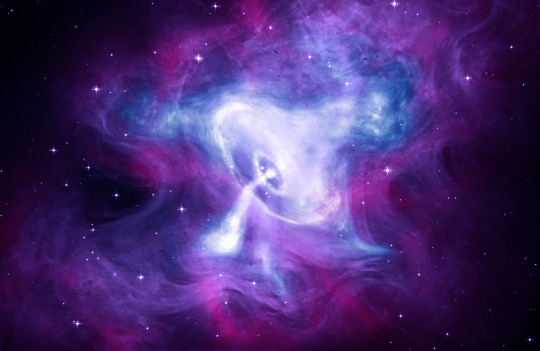
Navigating Deep Space by Starlight
On August 6, 1967, astrophysicist Jocelyn Bell Burnell noticed a blip in her radio telescope data. And then another. Eventually, Bell Burnell figured out that these blips, or pulses, were not from people or machines.

The blips were constant. There was something in space that was pulsing in a regular pattern, and Bell Burnell figured out that it was a pulsar: a rapidly spinning neutron star emitting beams of light. Neutron stars are superdense objects created when a massive star dies. Not only are they dense, but neutron stars can also spin really fast! Every star we observe spins, and due to a property called angular momentum, as a collapsing star gets smaller and denser, it spins faster. It’s like how ice skaters spin faster as they bring their arms closer to their bodies and make the space that they take up smaller.
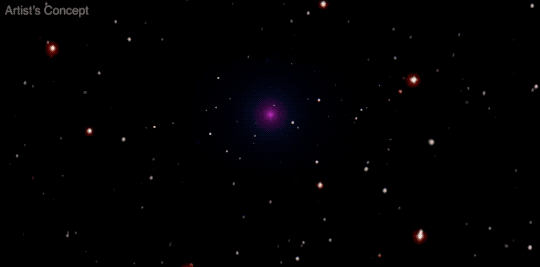
The pulses of light coming from these whirling stars are like the beacons spinning at the tops of lighthouses that help sailors safely approach the shore. As the pulsar spins, beams of radio waves (and other types of light) are swept out into the universe with each turn. The light appears and disappears from our view each time the star rotates.
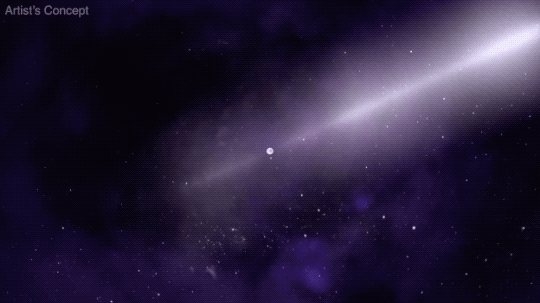
After decades of studying pulsars, astronomers wondered—could they serve as cosmic beacons to help future space explorers navigate the universe? To see if it could work, scientists needed to do some testing!
First, it was important to gather more data. NASA’s NICER, or Neutron star Interior Composition Explorer, is a telescope that was installed aboard the International Space Station in 2017. Its goal is to find out things about neutron stars like their sizes and densities, using an array of 56 special X-ray concentrators and sensitive detectors to capture and measure pulsars’ light.
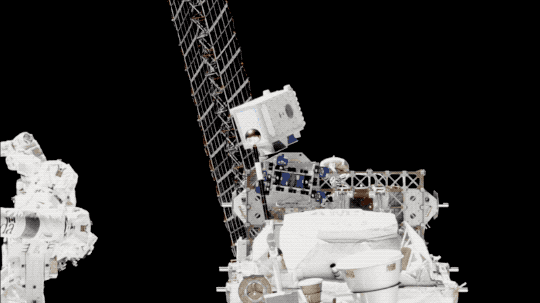
But how can we use these X-ray pulses as navigational tools? Enter SEXTANT, or Station Explorer for X-ray Timing and Navigation Technology. If NICER was your phone, SEXTANT would be like an app on it.
During the first few years of NICER’s observations, SEXTANT created an on-board navigation system using NICER’s pulsar data. It worked by measuring the consistent timing between each pulsar’s pulses to map a set of cosmic beacons.
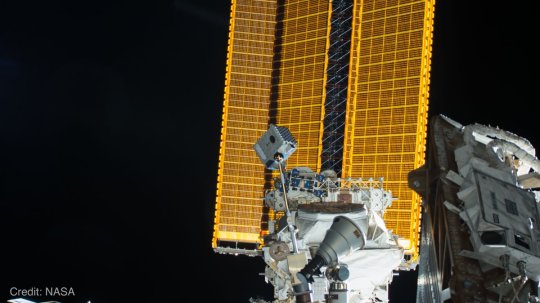
When calculating position or location, extremely accurate timekeeping is essential. We usually rely on atomic clocks, which use the predictable fluctuations of atoms to tick away the seconds. These atomic clocks can be located on the ground or in space, like the ones on GPS satellites. However, our GPS system only works on or close to Earth, and onboard atomic clocks can be expensive and heavy. Using pulsar observations instead could give us free and reliable “clocks” for navigation. During its experiment, SEXTANT was able to successfully determine the space station’s orbital position!

We can calculate distances using the time taken for a signal to travel between two objects to determine a spacecraft’s approximate location relative to those objects. However, we would need to observe more pulsars to pinpoint a more exact location of a spacecraft. As SEXTANT gathered signals from multiple pulsars, it could more accurately derive its position in space.

So, imagine you are an astronaut on a lengthy journey to the outer solar system. You could use the technology developed by SEXTANT to help plot your course. Since pulsars are reliable and consistent in their spins, you wouldn’t need Wi-Fi or cell service to figure out where you were in relation to your destination. The pulsar-based navigation data could even help you figure out your ETA!
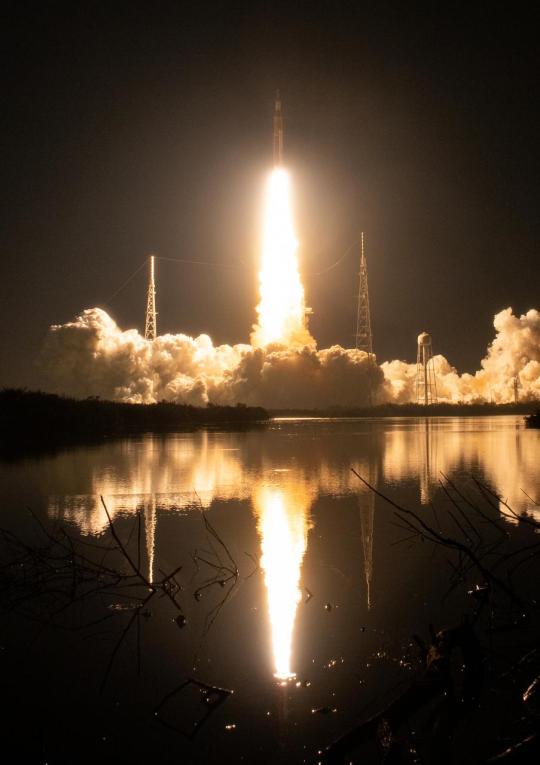
None of these missions or experiments would be possible without Jocelyn Bell Burnell’s keen eye for an odd spot in her radio data decades ago, which set the stage for the idea to use spinning neutron stars as a celestial GPS. Her contribution to the field of astrophysics laid the groundwork for research benefitting the people of the future, who yearn to sail amongst the stars.
Keep up with the latest NICER news by following NASA Universe on X and Facebook and check out the mission’s website. For more on space navigation, follow @NASASCaN on X or visit NASA’s Space Communications and Navigation website.
Make sure to follow us on Tumblr for your regular dose of space!
#NASA#pulsar#Jocelyn Bell Burnell#spaceblr#space#star#neutron star#deep space#telescope#navigation#universe#astronomy#science
4K notes
·
View notes
Text

Jocelyn Bell Burnell | 1943 | Lurgan, County Armagh, Northern Ireland
How did Jocelyn Bell Burnell change the world?
As a POSTGRADUATE STUDENT at Cambridge, astrophysicist Jocelyn Bell Burnell discovered the first radio pulsars in 1967, one of the most important astronomical discoveries of the 20th century. The discovery eventually earned the Nobel Prize in Physics in 1974 — for her doctoral advisor and male co-researcher.
Why didn't Jocelyn win the Nobel Prize?
The omission might appear to be due to her gender. But speaking at the International Conference on Women in Physics in Birmingham, UK, in 2017, Bell Burnell attributed it to the fact that she was a PhD student at the time of the discovery in 1967 at the University of Cambridge.
"Once a star dies, it's gone forever. There are no new stars to take its place".
11 notes
·
View notes
Text
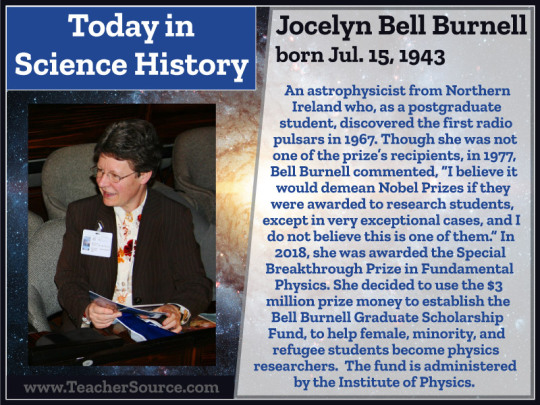
Jocelyn Bell Burnell was born on July 15, 1943. An astrophysicist from Northern Ireland who, as a postgraduate student, discovered the first radio pulsars in 1967. Though she was not one of the prize's recipients, in 1977, Bell Burnell commented, "I believe it would demean Nobel Prizes if they were awarded to research students, except in very exceptional cases, and I do not believe this is one of them." In 2018, she was awarded the Special Breakthrough Prize in Fundamental Physics. She decided to use the $3 million prize money to establish the Bell Burnell Graduate Scholarship Fund to help female, minority, and refugee students to become physics researchers. The fund is administered by the Institute of Physics.
#jocelyn bell burnell#physics#astrophysics#radio pulsars#women in science#women in history#science#science history#science birthdays#on this day#on this day in science history
121 notes
·
View notes
Text
i absolutely love physics, and have been learning about the history and chronological progress of it for the past months.
one thing that does bother me, is that there’s barely any women mentioned, especially back in history because well, we all know how terrible it has been for women.
but the women who DID manage to get a career or work done in physics, got their work stolen, not mentioned at all, or just got executed, (because how dare women have interests and intelligence), and it makes me so mad :’)
i hope the future of physics is brighter for women.
#radfem#radical feminism#gender critical#feminism#physics#lisa meitner#marthe gautier#rosalind franklin#chien shiung wu#hypatia#jocelyn bell burnell#emmy noether#could go on#not to mention every unnamed woman who got murdered for witchcraft#radblr
5 notes
·
View notes
Text
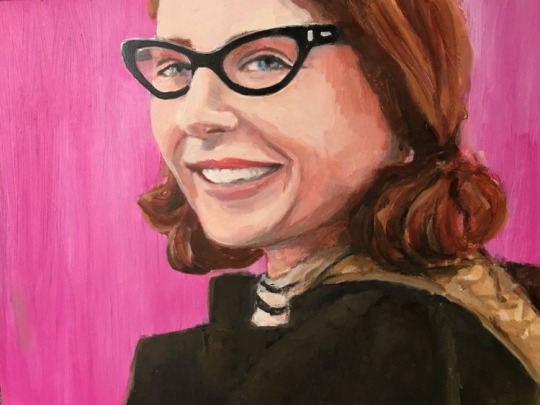
Jocelyn Bell Burnell by Allison Adams
"If we assume we've arrived, we stop searching, we stop developing."
Dr. Jocelyn Bell Burnell (born 1943) is an acclaimed Irish astrophysicist, who was among the few women to pursue a career in science at the time. As a graduate student, she discovered pulsars (a highly magnetized, rotating neutron star or white dwarf, that emits a beam of electromagnetic radiation) but was snubbed for the Nobel Peace Prize, most likely due to her sex. But she went on to enjoy a life filled with many honors in her field. Bell Burnell was president of the Royal Astronomical Society, president of the Institute of Physics, president of the Royal Society of Edinburgh, and Pro-Chancellor of the University of Dublin.
#Jocelyn bell burnell#Allison adams#art#artwork#female scientists#women in history#herstory#women in stem#women in science#astrophysics#astrophysicists#irl women/girls
9 notes
·
View notes
Text
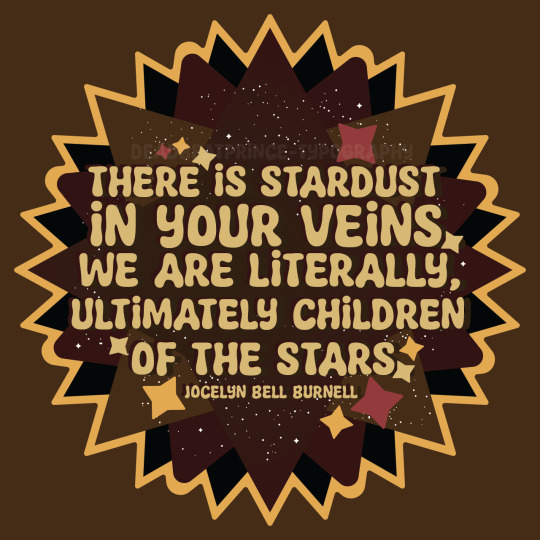
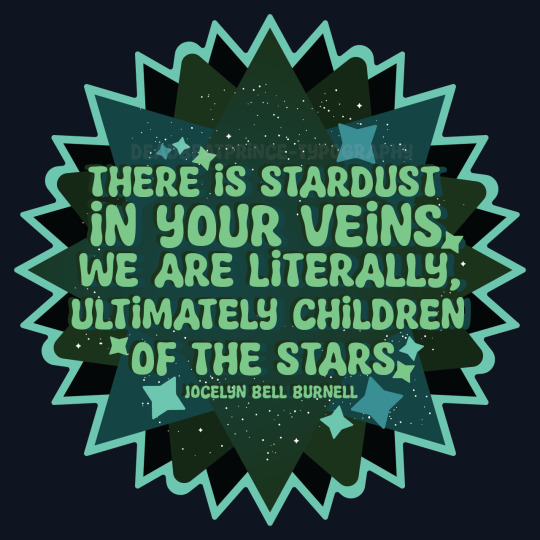
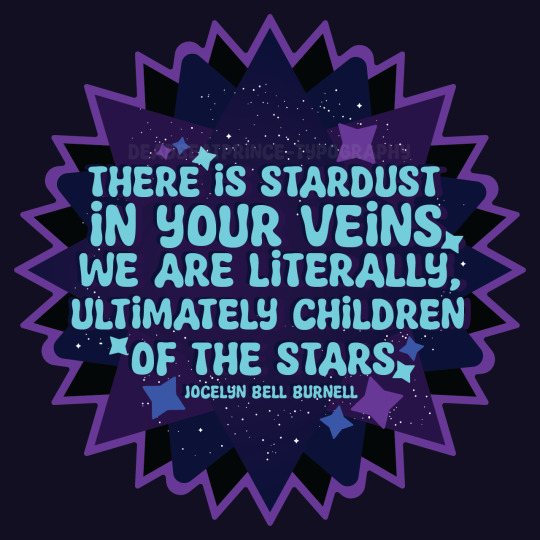
"There is stardust in your veins. We are literally ultimately children of the stars." a very cool space quote by Jocelyn Bell Burnell!
more star art! [ teepublic | redbubble | threadless ]
#deadbeat typography#redbubble artist#teepublic artist#typography#artists on tumblr#quote art#quotes#jocelyn bell burnell#stars#space art#star quotes#teepublic#redbubble#digital artist
6 notes
·
View notes
Text



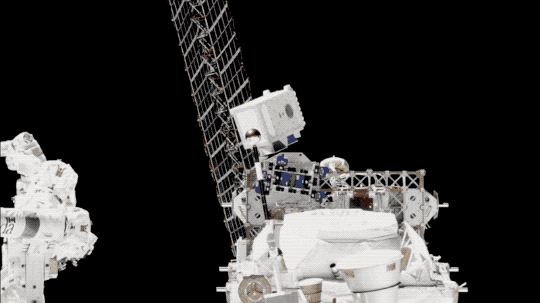


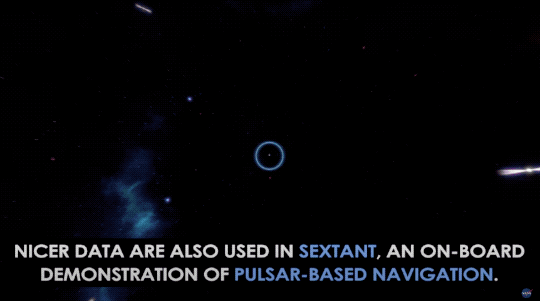

Jocelyn Bell Burnell was born on July 15, 1943. An astrophysicist from Northern Ireland who, as a postgraduate student, discovered the first radio pulsars in 1967. Though she was not one of the prize's recipients, in 1977, Bell Burnell commented, "I believe it would demean Nobel Prizes if they were awarded to research students, except in very exceptional cases, and I do not believe this is one of them." In 2018, she was awarded the Special Breakthrough Prize in Fundamental Physics. She decided to use the $3 million prize money to establish the Bell Burnell Graduate Scholarship Fund to help female, minority, and refugee students to become physics researchers. The fund is administered by the Institute of Physics.
3 notes
·
View notes
Photo
Entirely too many of these tags had no autocomplete. Note to self: fix that.
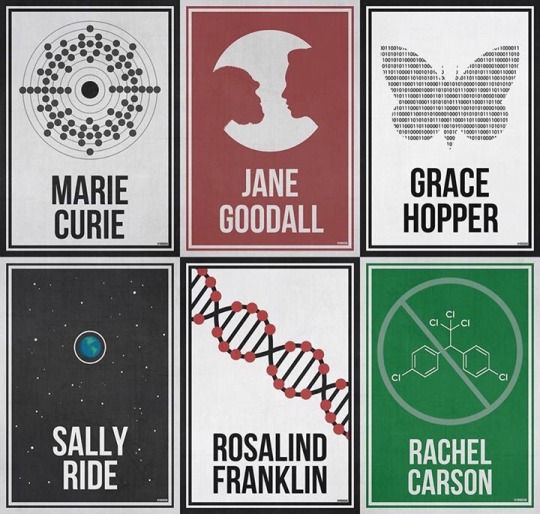
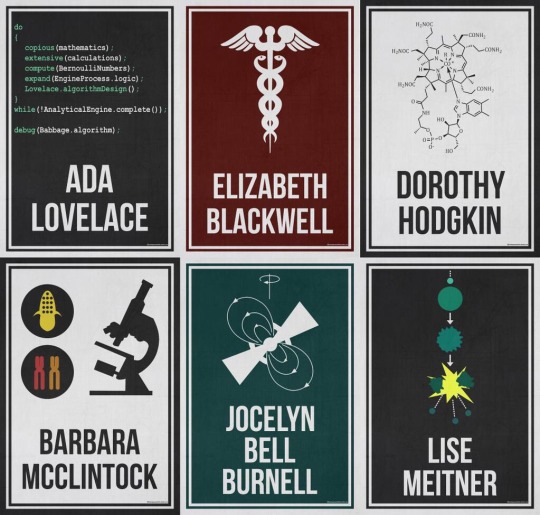
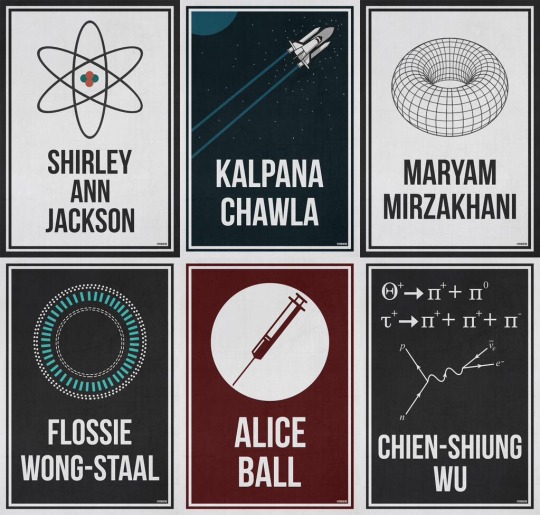
The complete ‘Women Who Changed Science - And The World" collection in honor of the 95th Women’s Equality Day.
Purchase Here!
#politics#science#marie curie#jane goodall#grace hopper#sally ride#rosalind franklin#rachel carson#ada lovelace#elizabeth blackwell#dorothy hodgkin#barbara mcclintock#jocelyn bell burnell#lise meitner#shirley ann jackson#kalpana chawla#maryam mirzakhani#flossie wong-staal#alice ball#chien-shiung wu#mathematics#computer science#ada
124K notes
·
View notes
Text
they call it storm jocelyn cause it's gonna be jocelyn things about
7 notes
·
View notes
Text
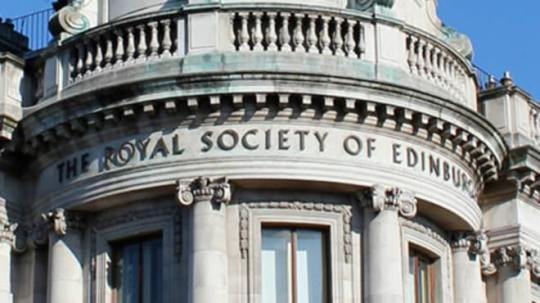

March 29th 1783 saw The Royal Society of Edinburgh incorporated by Royal charter.
At the start of the 18th century, Edinburgh's intellectual climate fostered many clubs and societies of which the most prestigious was the Society for the Improvement of Medical Knowledge founded in 1731. Its name changed over time and became the Edinburgh Philosophical Society and then finally the Royal Society of Edinburgh in 1783, issuing, in 1788, the first volume of its new journal Transactions of the Royal Society of Edinburgh.
Its mission is to advance learning and useful knowledge and by doing so it supports the cultural, economic and social well-being of Scotland and its people.
The Society delivers programmes that support research, enterprise, education and public engagement.It also incorporates the world’s leading chemistry community, advancing excellence in the chemical sciences. It regularly engages with policy makers on the many ways that chemistry can help tackle modern challenges such as climate change; the security of energy, food and water; the economy; and science education in Scotland. Unlike similar bodies the society is a non political body and has always been independent in all it's work.
It's presidents have included pioneering lighthouse designer Thomas Stevens and Lord Kelvin, Dame Jocelyn Bell Burnell was announced as the society's first female president in 2014, she sat until Professor Dame Anne Glover was voted in three years ago.
It has been housed in a few properties through the years but since 1909 it has been based in 22 – 24 George Street, on the junction with Hanover Street.https://rse.org.uk/
You can find out more bout the organisation here https://rse.org.uk/
24 notes
·
View notes
Text
Children's Books Featuring Women In Science🥼
Rosie Revere, Engineer
Ada Twist, Scientist
The Doctor with an Eye for Eyes: The Story of Dr. Patricia Bath
Who Says Women Can't Be Doctors?: The Story of Elizabeth Blackwell
Just Wild Enough: Mireya Mayor, Primatologist
The Watcher: Jane Goodall's Life with the Chimps
The Tree Lady: The True Story of How One Tree-Loving Woman Changed a City Forever
Summer Birds: The Butterflies of Maria Merian
Rachel Carson and Her Book That Changed the World
Mama Miti: Wangari Maathai and the Trees of Kenya
The Elephant Scientist
Classified: The Secret Career of Mary Golda Ross, Cherokee Aerospace Engineer
The World is Not a Rectangle: A Portrait of Architect Zaha Hadid
Maya Lin: Artist-Architect of Light and Lines
Marvelous Mattie: How Margaret E. Knight Became an Inventor
Girls Think of Everything: Stories of Ingenious Inventions by Women
Nothing Stopped Sophie: The Story of Unshakable Mathematician Sophie Germain
Listening to the Stars: Jocelyn Bell Burnell Discovere Pulsars
Hidden Figures: The True Story of Four Black Women and the Space Race
Look Up!: Henrietta Leavitt, Pioneering Woman Astronomer
Ada Byron Lovelace and the Thinking Machine
Grace Hopper: Queen of Computer Code
Margaret and the Moon: How Margaret Hamilton Saved the First Lunar Landing
Of Numbers and Stars: The Story of Hypatia
Life in the Ocean: The Story of Oceanographer Sylvia Earle
This list will definitely grow a lot bigger!
Enjoy your reading!
12 notes
·
View notes
Text


Happy 56th anniversary of the observation of pulsars!
On 28 November 1967, while a postgraduate student at Cambridge, Bell Burnell detected a "bit of scruff" on her chart-recorder papers that tracked across the sky with the stars. The signal had been visible in data taken in August, but as the papers had to be checked by hand, it took her three months to find it.[25] She established that the signal was pulsing with great regularity, at a rate of about one pulse every one and a third seconds. Temporarily dubbed "Little Green Man 1" (LGM-1) the source (now known as PSR B1919+21) was identified after several years as a rapidly rotating neutron star.
Nice Q&A with Professor Dame Jocelyn Bell Burnell: https://www.cam.ac.uk/stories/journeysofdiscovery-pulsars
3D art featuring pulsars by me; info: https://www.olenashmahalo.com/project/nanograv
#sciart#3d#illustration#science illustration#physics#astronomy#astrophysics#3d art#art#published#portfolio#olena shmahalo#natureintheory#pulsars#pulsar#AGN#neutron star#blazar#quasar#women in stem#women in STEAM#women in science#women in art
36 notes
·
View notes
Text
When computers wore skirts
So almost everyone's heard the amazing tid-bit of delicious history that the woman who programmed the Apollo something or other was also making a Jack Black.
And that it was a black woman who was so good at transcribing data that she used to correct the sloppy programming of NASA so accurately that Astronauts would double check with her before committing to action.
And that Admiral Grace hopper, age 56 was hammering out COBOL and putting moths into the logbook.
And you may even recall that Hedy Lamar showed up in the US and patented Radio Frequency hopping which is what Mobile phones use
Or that Pulsars were discovered, nay predicted then discovered by a woman who's name is sadly lost to time... ha ha, joking it was Jocelyn Bell Burnell, who is very much now credited with the work much to the annoyance of the guy who stole her work and got a Nobel.
But did you know it was a woman who invented the Dish-Washer because she wanted a way to wash plates that would protect them from being dropped? Say thanks to Josephine Garis Cochran should her spectral form float through your room tonight.
And should you want to read about young wizards facing off against evil, Oh boy, Diane Duane's like RIGHT BEHIND YOU!
Or maybe you'd like some Trek? Well Dorothy Catherine Fontana wrote half your favourite TOS episodes as DC Fontana, so high five!
And any true Dr Who fan knows that Verity Lambert just pulled the entire franchise out of the vortex, despite the efforts of the men who hadn't the vision for it.
Anyway, what I'm saying is we live in a world that's made by women who did fantastic fabulous things and I'm truly grateful they did.
33 notes
·
View notes
Text
DR. JOCELYN BELL BURNELL // ASTROPHYSICIST
“She was the only woman to study physics at her college where there was a “tradition” among students that whenever a woman walked into a lecture theatre, they “stamped and whistled and called and banged the desk”. This happened in every class that she entered for 2 years. She discovered the first four pulsars (spinning stars made for neutrons) using a large radio telescope she had helped build and analyzed the data for. Her observations were published with her male supervisor’s name appearing before hers. He and a colleague went on to win the Nobel Prize for the discovery, while she was snubbed. It is now accepted that she was the first person to make the discovery, despite the lack of formal credit. She was created Commander of the Order of the British Empire in 1999 and Dame in 2007. She also was a member of the Royal Society, served as President of the Royal Astronomical Society and was the First Female President at the Institute of Physics.”


2 notes
·
View notes
Text
Our Players
It took me a long time to find the names of the characters I was working with and it wasn't until I joined the most delightful Discord server and started interacting with the most talented writers and artists that we found out who they are.
My good friend @wardenamatus helped me to find their names. After some deliberation on the playful nature of the farmer, the nickname Stardust was suggested with the first name of Lyra, which I fell very hard for! Stardust because my OC loves space and nature, art and science, and this name had a whimsical quality that covered all of these things.
Her name is Lyra and I loved this as it reminded me of the main character of my beloved Lyra Silvertongue from His Dark Materials and The Book of Dust by the genius Philip Pullman.
I decided to keep the astronomy theme, giving her the last name of Burnell, in honour of the great astrophysicist Dame Jocelyn Bell Burnell, who discovered the pulsar.
The Harvey I write is quietly charming, once you get to know him of course, so I decided to give him the last name of Dalton, in honour of extremely charming British actor, Timothy Dalton. Once I said the name out loud, it just fit so well.
I love them both and love writing their fun banter. They are both quiet souls, although she is much more outgoing than he is, but when they are together, I want the sparks to fly like shooting stars.
4 notes
·
View notes